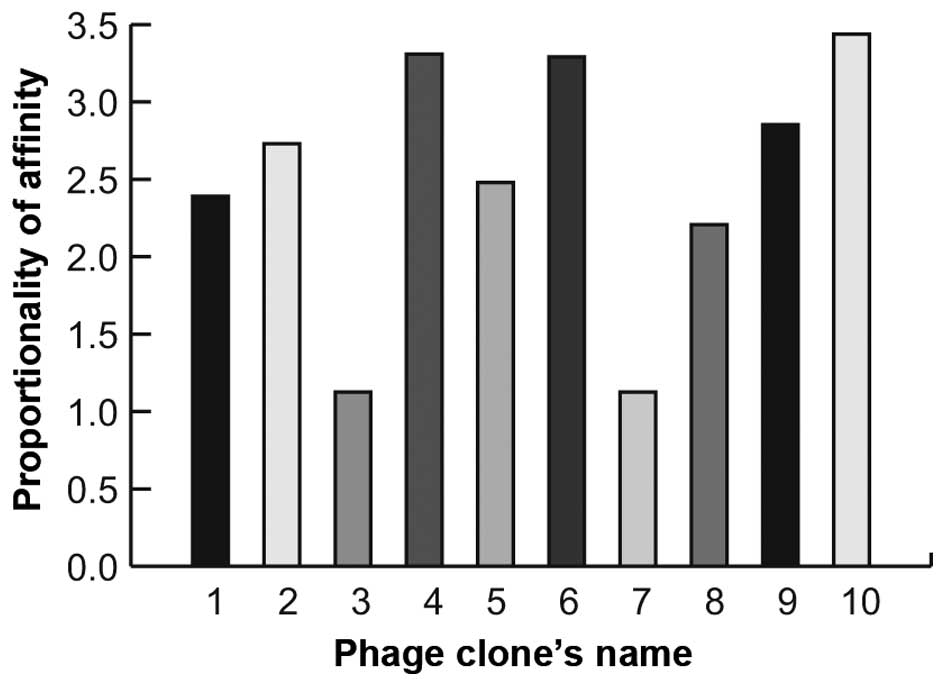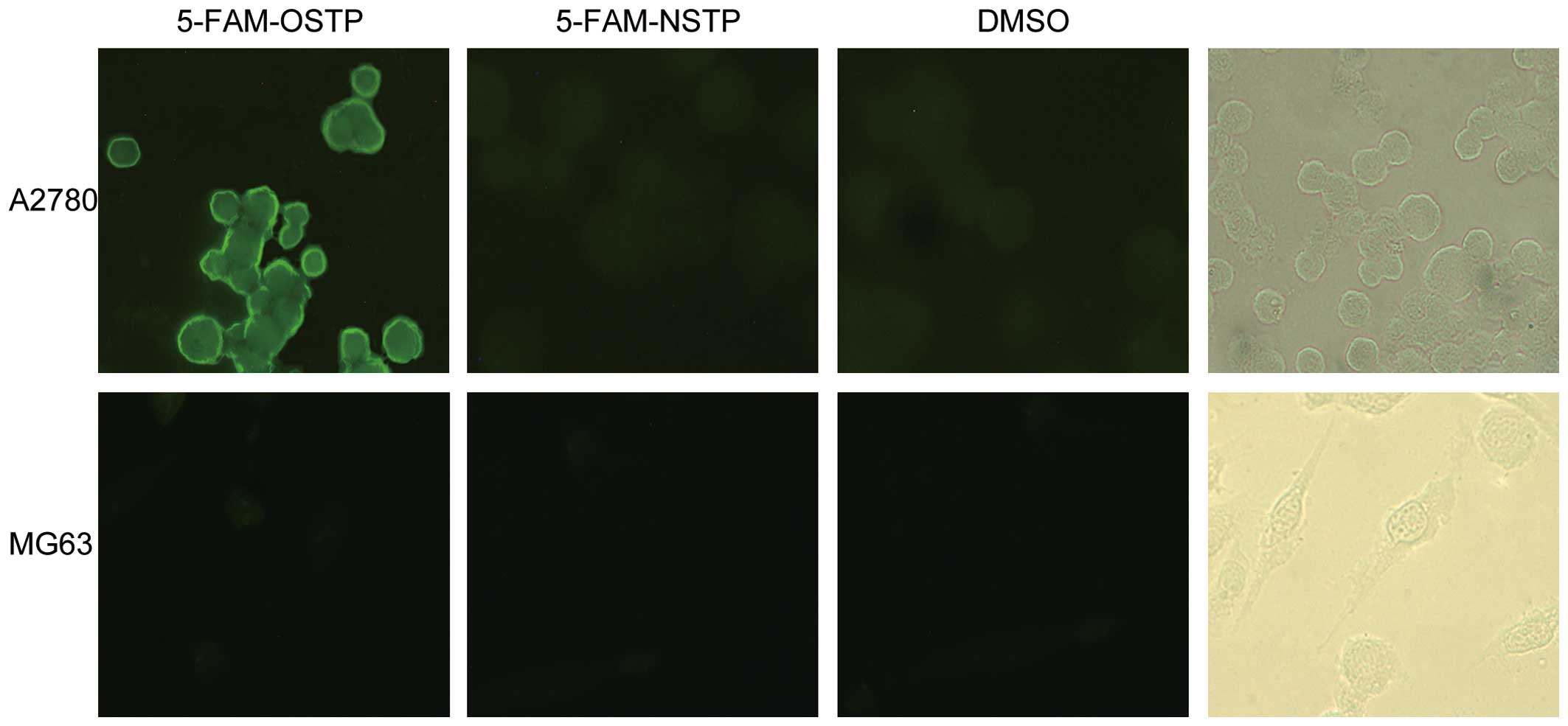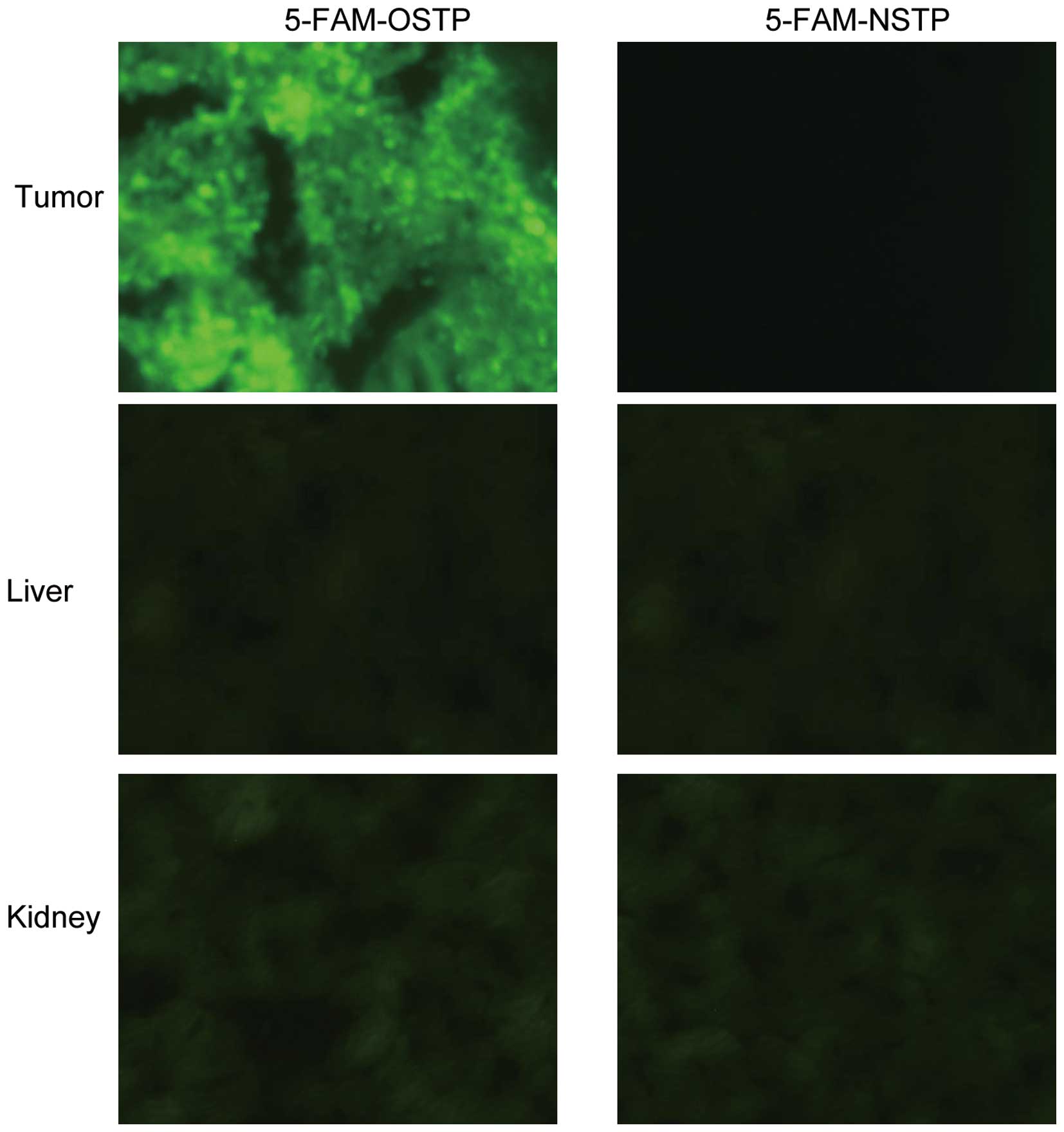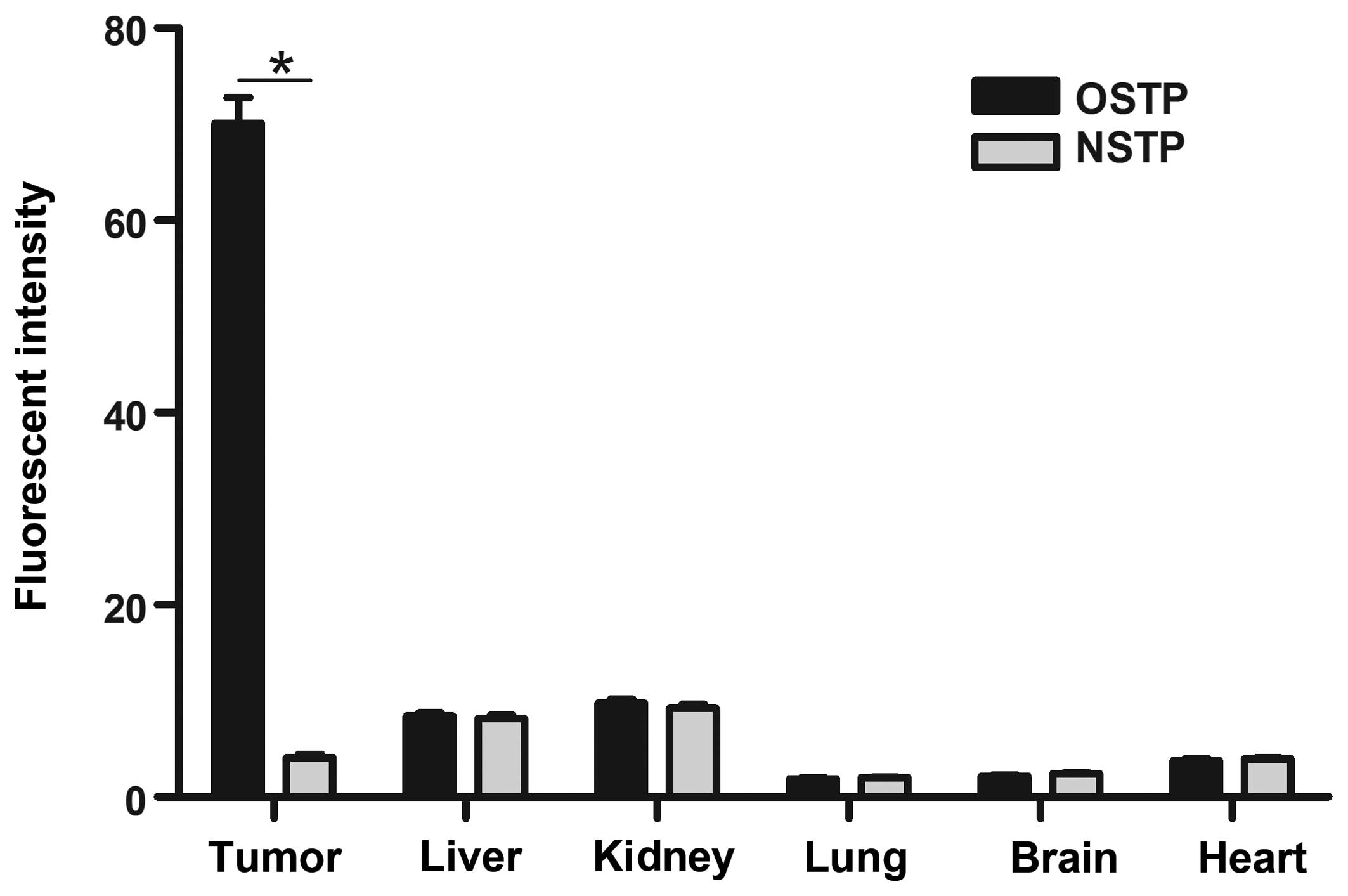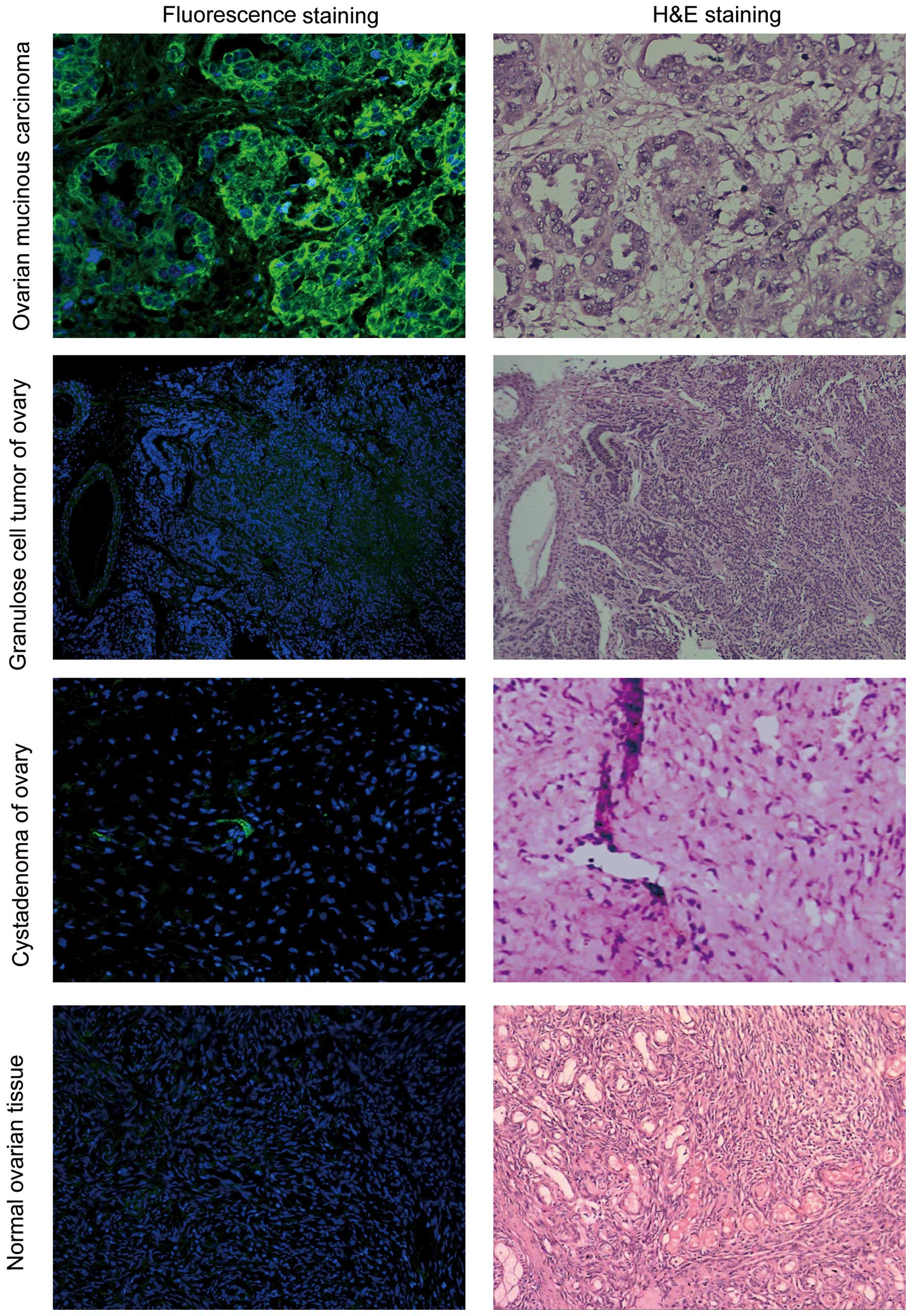|
1
|
Gondos A, Bray F, Hakulinen T and Brenner
H: EUNICE Survival Working Group: Trends in cancer survival in 11
European populations from 1990 to 2009: A model-based analysis. Ann
Oncol. 20:564–573. 2009. View Article : Google Scholar
|
|
2
|
Jemal A, Siegel R, Ward E, Hao Y, Xu J,
Murray T and Thun MJ: Cancer statistics, 2008. CA Cancer J Clin.
58:71–96. 2008. View Article : Google Scholar : PubMed/NCBI
|
|
3
|
Yang NN, Yan YQ and Gong J: An analysis on
incidence and mortality of ovarian cancer from 2003 to 2007 in
China. China Cancer. 21:401–405. 2012.
|
|
4
|
Yang D, Sun Y, Hu L, Zheng H, JI P, Pecot
CV, Zhao Y, Reynolds S, Cheng H, Rupaimoole R, et al: Integrated
analyses identify a master microRNA regulatory network for the
mesenchymal subtype in serous ovarian cancer. Cancer Cell.
23:186–199. 2013. View Article : Google Scholar : PubMed/NCBI
|
|
5
|
Coleman RL, Monk BJ, Sood AK and Herzog
TJ: Latest research and treatment of advanced-stage epithelial
ovarian cancer. Nat Rev Clin Oncol. 10:211–224. 2013. View Article : Google Scholar : PubMed/NCBI
|
|
6
|
Zhu AX and Hezel AF: Development of
molecularly targeted therapies in biliary tract cancers:
Reassessing the challenges and opportunities. Hepatology.
53:695–704. 2011. View Article : Google Scholar : PubMed/NCBI
|
|
7
|
Masoumi Moghaddam S, Amini A, Morris DL
and Pourgholami MH: Significance of vascular endothelial growth
factor in growth and peritoneal dissemination of ovarian cancer.
Cancer Metastasis Rev. 31:143–162. 2012. View Article : Google Scholar :
|
|
8
|
Ferrara N, Gerber HP and LeCouter J: The
biology of VEGF and its receptors. Nat Med. 9:669–676. 2003.
View Article : Google Scholar : PubMed/NCBI
|
|
9
|
Bookman MA, Darcy KM, Clarke-Pearson D,
Boothby RA and Horowitz IR: Evaluation of monoclonal humanized
anti-HER2 antibody, trastuzumab, in patients with recurrent or
refractory ovarian or primary peritoneal carcinoma with
overexpression of HER2: A phase ii trial of the Gynecologic
Oncology Group. J Clin Oncol. 21:283–290. 2003. View Article : Google Scholar : PubMed/NCBI
|
|
10
|
Tebbutt N, Pedersen MW and Johns TG:
Targeting the ERBB family in cancer: Couples therapy. Nat Rev
Cancer. 13:663–673. 2013. View
Article : Google Scholar : PubMed/NCBI
|
|
11
|
Morotti M, Valenzano Menada M, Venturini
PL, Mammoliti S and Ferrero S: Pemetrexed disodium in ovarian
cancer treatment. Expert Opin Investig Drugs. 21:437–449. 2012.
View Article : Google Scholar : PubMed/NCBI
|
|
12
|
Oei AL, Sweep FC, Thomas CM, Boerman OC
and Massuger LF: The use of monoclonal antibodies for the treatment
of epithelial ovarian cancer (Review). Int J Oncol. 32:1145–1157.
2008. View Article : Google Scholar : PubMed/NCBI
|
|
13
|
Leone Roberti Maggiore U, Bellati F,
Ruscito I, Gasparri ML, Alessandri F, Venturini PL and Ferrero S:
Monoclonal antibodies therapies for ovarian cancer. Expert Opin
Biol Ther. 13:739–764. 2013. View Article : Google Scholar : PubMed/NCBI
|
|
14
|
Siegel R, Ward E, Brawley O and Jemal A:
Cancer statistics, 2011: The impact of eliminating socioeconomic
and racial disparities on premature cancer deaths. CA Cancer J
Clin. 61:212–236. 2011. View Article : Google Scholar : PubMed/NCBI
|
|
15
|
Corso S, Ghiso E, Cepero V, Sierra JR,
Migliore C, Bertotti A, Trusolino L, Comoglio PM and Giordano S:
Activation of HER family members in gastric carcinoma cells
mediates resistance to MET inhibition. Mol Cancer. 9:1212010.
View Article : Google Scholar : PubMed/NCBI
|
|
16
|
Smith GP: Filamentous fusion phage: Novel
expression vectors that display cloned antigens on the virion
surface. Science. 228:1315–1317. 1985. View Article : Google Scholar : PubMed/NCBI
|
|
17
|
Wang N, Thuraisingam T, Fallavollita L,
Ding A, Radzioch D and Brodt P: The secretory leukocyte protease
inhibitor is a type 1 insulin-like growth factor receptor-regulated
protein that protects against liver metastasis by attenuating the
host proinflammatory response. Cancer Res. 66:3062–3070. 2006.
View Article : Google Scholar : PubMed/NCBI
|
|
18
|
Li M, Anastassiades CP, Joshi B, Komarck
CM, Piraka C, Elmunzer BJ, Turgeon DK, Johnson TD, Appelman H, Beer
DG, et al: Affinity peptide for targeted detection of dysplasia in
Barrett’s esophagus. Gastroenterology. 139:1472–1480. 2010.
View Article : Google Scholar : PubMed/NCBI
|
|
19
|
Yang W, Luo D, Wang S, Wang R, Chen R, Liu
Y, Zhu T, Ma X, Liu R, Xu G, et al: TMTP1, a novel tumor-homing
peptide specifically targeting metastasis. Clin Cancer Res.
14:5494–5502. 2008. View Article : Google Scholar : PubMed/NCBI
|
|
20
|
Sugahara KN, Teesalu T, Karmali PP,
Kotamraju VR, Agemy L, Girard OM, Hanahan D, Mattrey RF and
Ruoslahti E: Tissue-penetrating delivery of compounds and
nanoparticles into tumors. Cancer Cell. 16:510–520. 2009.
View Article : Google Scholar : PubMed/NCBI
|
|
21
|
Noren KA and Noren CJ: Construction of
high-complexity combinatorial phage display peptide libraries.
Methods. 23:169–178. 2001. View Article : Google Scholar : PubMed/NCBI
|
|
22
|
Bamias A, Pignata S and Pujade-Lauraine E:
Angiogenesis: A promising therapeutic target for ovarian cancer.
Crit Rev Oncol Hematol. 84:314–326. 2012. View Article : Google Scholar : PubMed/NCBI
|
|
23
|
Vosjan MJ, Vercammen J, Kolkman JA,
Stigter-van Walsum M, Revets H and van Dongen GA: Nanobodies
targeting the hepatocyte growth factor: Potential new drugs for
molecular cancer therapy. Mol Cancer Ther. 11:1017–1025. 2012.
View Article : Google Scholar : PubMed/NCBI
|
|
24
|
Zwick MB, Shen J and Scott JK:
Phage-displayed peptide libraries. Curr Opin Biotechnol. 9:427–436.
1998. View Article : Google Scholar : PubMed/NCBI
|
|
25
|
Ferrara N and Kerbel RS: Angiogenesis as a
therapeutic target. Nature. 438:967–974. 2005. View Article : Google Scholar : PubMed/NCBI
|
|
26
|
Brooks PC, Montgomery AM, Rosenfeld M,
Reisfeld RA, Hu T, Klier G and Cheresh DA: Integrin alpha v beta 3
antagonists promote tumor regression by inducing apoptosis of
angiogenic blood vessels. Cell. 79:1157–1164. 1994. View Article : Google Scholar : PubMed/NCBI
|
|
27
|
Li XB, Schluesener HJ and Xu SQ: Molecular
addresses of tumors: Selection by in vivo phage display. Arch
Immunol Ther Exp (Warsz). 54:177–181. 2006. View Article : Google Scholar
|
|
28
|
Pasqualini R and Ruoslahti E: Organ
targeting in vivo using phage display peptide libraries. Nature.
380:364–366. 1996. View
Article : Google Scholar : PubMed/NCBI
|
|
29
|
Pasqualini R, Koivunen E and Ruoslahti E:
Alpha v integrins as receptors for tumor targeting by circulating
ligands. Nat Biotechnol. 15:542–546. 1997. View Article : Google Scholar : PubMed/NCBI
|
|
30
|
Arap W, Pasqualini R and Ruoslahti E:
Cancer treatment by targeted drug delivery to tumor vasculature in
a mouse model. Science. 279:377–380. 1998. View Article : Google Scholar : PubMed/NCBI
|
|
31
|
Teesalu T, Sugahara KN, Kotamraju VR and
Ruoslahti E: C-end rule peptides mediate neuropilin-1-dependent
cell, vascular, and tissue penetration. Proc natl Acad Sci USA.
106:16157–16162. 2009. View Article : Google Scholar : PubMed/NCBI
|
|
32
|
Xiao K, Li Y, Lee JS, Gonik AM, Dong T,
Fung G, Sanchez E, Xing L, Cheng HR, Luo J, et al: ‘OA02’ peptide
facilitates the precise targeting of paclitaxel-loaded micellar
nanoparticles to ovarian cancer in vivo. Cancer Res. 72:2100–2110.
2012. View Article : Google Scholar : PubMed/NCBI
|
|
33
|
Li K, Lv XX, Hua F, Lin H, Sun W, Cao WB,
Fu XM, Xie J, Yu JJ, Li Z, et al: Targeting acute myeloid leukemia
with a proapoptotic peptide conjugated to a toll-like receptor
2-mediated cell-penetrating peptide. Int J Cancer. 134:692–702.
2014. View Article : Google Scholar
|



